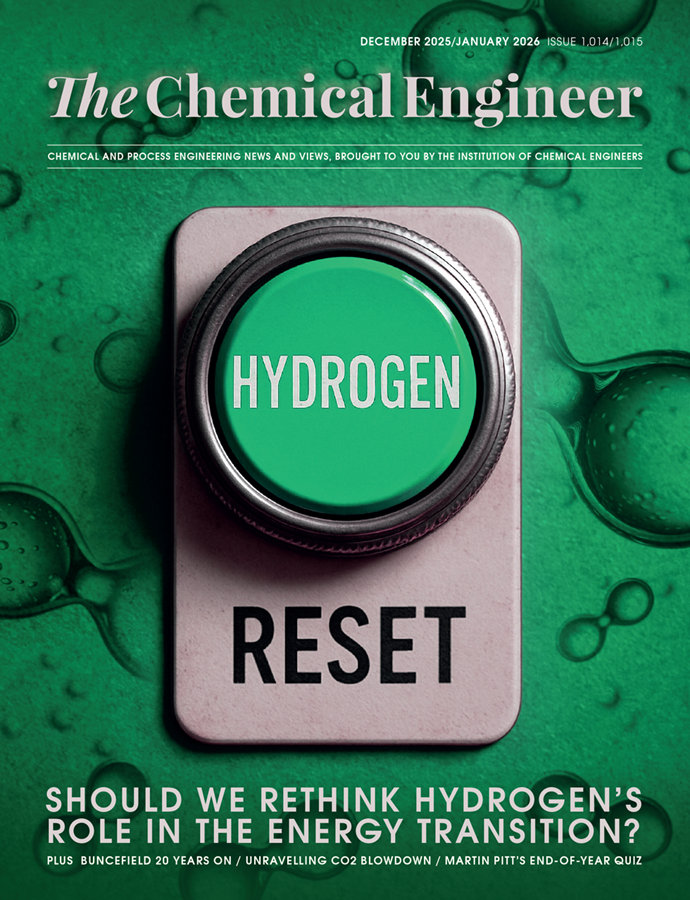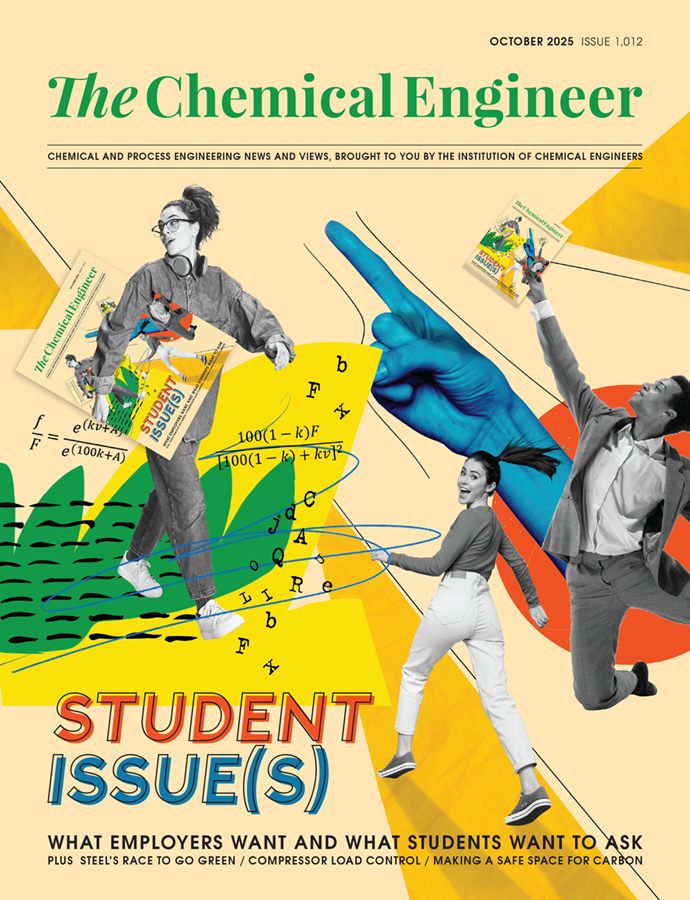HAZOP in a World of Covid
Conor Crowley looks at how his team has adapted to conduct good HAZOPs amidst pandemic and lockdown
DOES a HAZOP feel creative? It struck me as an unusual word to have in IEC 61882, the HAZOP Application Guide, but it does state that “HAZOP examination … is a creative process. The examination proceeds by systematically using a series of guide words to identify potential deviations from the design intent and employing these deviations as “triggering devices” to stimulate team members to envisage how the deviation might occur and what might be the consequences.”
In his book HAZOP and HAZAN, Trevor Kletz describes HAZOP as a “technique which provides opportunities for people to let their imaginations go free and think of all possible ways in which a hazard might occur, but – to reduce the chance that something is missed – it is done in a systematic way, each pipeline and each sort of hazard is considered in turn.”
This may be true, but I’ve been in many a HAZOP, and even facilitated a fair few, for which the word “creative” would not have been the first adjective I would use. “Structured”, “thorough”, “challenging”, yes. But “creative”?
In some ways, we’ve probably had to be a lot more creative since the lockdowns and the wider impact of Covid-19 to deliver a good HAZOP, and that has in turn caused me to think more about how a HAZOP is or is not a creative process, and what I can do as a facilitator to make the creative magic happen. In some ways, it’s felt a bit like the scene in Apollo 13 where the engineering team is dumped a lot of random equipment and told to rig up a carbon dioxide filter for the stricken spacecraft. What we’ve had available to do the job was probably not what we would have chosen to have in an ideal world, but like the engineers, we’ve taken what we had and tried to make the best of it.
History of HAZOP
In the 1960s the ICI pioneers of the technique considered how to tackle the issue of increasing complexity of plants, control systems, and processes, and developed the guideword-based approach we have studied and used for generations. And I’m pretty sure that ensuring it worked over videoconference software was not a prime consideration! The history of HAZOP and how the story is told to us as engineers tends to be pretty linear. ICI generated the method to do detailed process safety reviews of complicated process plants to test its design, people outside ICI realised it was a good idea, and since the 60s/70s/80s, it’s been the process safety design testing system of choice.
Of course it wasn’t that straightforward. I was part of a team that spent two years in the early 90s retrospectively HAZOPing two complex offshore oil and gas facilities for the first time, that had been running for 5 and 10 years before any HAZOP examination had been done on them. Colleagues of mine have started HAZOPs of water treatment plants for the first time in 2010.
But we clearly have a mature method to follow, one well enough understood that an international standard could be written about it. Get a team together, a big enough meeting room, define your nodes and off you go. And then Covid-19 happened.
Current day HAZOP and Covid-19
When the lockdown came in the UK, it seemed quite sudden. I had just finished a short design HAZOP on a subsea tie-back, which was challenging in its own way, having a large number of personnel in a room representing different partnerships in the deal, and different design contractors. For three days, we had two people dialling into the HAZOP from a timezone eight hours ahead of us. I hadn’t realised that we would all be in the same boat as them a few short weeks later.
A lot of the HAZOPs we had coming up suddenly looked in doubt. We work in worldwide industries, and project teams often span different countries, and project teams can be centred anywhere in the world. It became very clear quite quickly that co-locating a full team was not going to be feasible, but we were looking at different options for finding facilitators who were based in the right country to allow dispersed local teams, maybe linked via videoconference. A few days later, and all our major markets were in “work from home” lockdown.
I had a few short HAZOPs and risk meetings scheduled, and we were quickly trying to figure out how best to get things going. While the media hype was all about Zoom, we were not allowed to use that corporately, and most of our clients seemed to be converging on Microsoft Teams or Skype. While we had been using these tools internally for a while, the rollout of Teams for the full organisation was agreed and turned around remarkably quickly. A lot of the first few weeks involved bringing people up to speed on how the platforms would work. There was a lot of chat online, especially on LinkedIn, and the discussion seemed to be in two camps: “we should not be doing any remote HAZOPing as we don’t know if it works”, and “it’s just the same as a real workshop, you just need to use two of your three screens as follows”. I found that the truth is somewhere in between.
For a number of the high-profile projects, it quickly became moot as to whether the HAZOPs were going to be fully remote, co-located remote teams, or face-to-face – with no certainty on how organisations were going to be allowed to work, and even less certainty on things like the economic outlook, and even an unprecedented negative oil price, project delays were announced, some of them postponements and some of them cancellations.
After a few weeks, the dust started to settle a little, and we got on with the task in front of us. Pleasantly surprised at how robust Teams seemed to be, and with the backup of older technology if that was to fail, we did some one-day and two-day sessions. We tore up some of the guidance which hadn’t aged well, such as asking for drawing print-offs multiple weeks before a HAZOP started. From my laptop and writing desk, I grew a little tired of seeing advice on how to set up multiple screens for remote workshops, knowing that I (and a number of the attendees) were single-screen only folk. For a few weeks, there were carefully-curated pictures circulating of the desk setups of some of the engineers in our teams and beyond, some of which might not have looked out of place in mission control! It possibly shows my age, but I learned about the concept of a “gaming chair”, and how this was the perfect endpoint for your multi-screen setup. The day I managed to procure a second large screen, and join the multi-screen crew was, in fairness, a step forward in my meeting productivity.
Other perspectives: the pharmaceutical sector
While we were seeing slow-down in the upstream oil and gas sector, the pharmaceutical world was seeing the opposite. Speaking to former classmates of mine, working with PM Group in Ireland, they were looking at rapidly reconfiguring plants to manufacture Covid-19 treatments, and even getting facilities ready to manufacture an as-yet-unknown vaccine.
They saw a huge increase in the requirement for HAZOPs during the pandemic. In the first month alone, 50 remote sessions were chaired. While this might seem due to vaccines and treatment development, the increase was more due to the sudden availability of operators, subject matter experts and vendors who in normal circumstances would be on site, on a plane or otherwise in demand. Once clients came to terms with the situation, it was really a case of how can projects progress under the current circumstances?
They had some issues with Zoom, and quickly ended up on Teams as a platform. The majority of sessions were reduced to no more than four hours actual HAZOP time per day to maximise the energy of the team, break times were agreed at the start of each session, and wrap-ups were conducted to capture feedback on what went well and what challenges were faced in conducting the HAZOP remotely. The lessons were then shared with colleagues.
The consensus of PM Group chairs was that while there is no substitute to getting key individuals in a room the remote solution was workable under the extraordinary circumstances. As with other sectors if the scope is a novel, unique or difficult technology then room is favoured over remote.
Takeaways
For me, there are a few key takeaways from the experience. Firstly, and most importantly, if all you do in a remote meeting is attempt to exactly replicate the experience of a full meeting-room HAZOP, then you simply get all the disadvantages of a large meeting, including poor engagement, limited contribution, and great expense, without gaining the benefits of using collaborative tools. And, without even the physical limit on how many people can fit in a meeting room, there is even the risk that a workshop will become even less efficient and more expensive. While the HAZOP method is pretty prescriptive, and as a result less open to optimisation for a different setting, other workshops might be done completely differently. We’ve done silent HAZIDs, where a significant proportion of the meeting is people documenting their assessments onto a single document as a co-authoring experience, with the speaking part of the meeting focussed on the areas where you can’t resolve differing opinions on consequence severity, or whether safeguards are effective.
The facilitation experience is also different. It’s hard to determine the energy level in an online meeting, with fewer visual clues about people’s degree of engagement, body language etc. The highest the energy seems to get is if two or three people are trying to start talking at the same time, but that would barely register in a physical meeting. So I’ve found myself focussing more on the types of questions I am asking, and to whom I am asking them, and maybe not being as able to look at the technical input.
I heard an interview with Esquire writer and journalist Carl Fussman, who has been renowned over the years for getting some real scoops from his interviewees. He said plenty of interviewees had asked him for his preparatory questions in advance of the interviews, and he said he was glad to share them, because it wasn’t the question he first asked, or the follow-up question, but often the third or fourth question on a line of questions that got the real answer. So just having the first question is not enough. For me, HAZOP can be quite like that – anyone can ask the “cause of no-flow” question, it’s the “what is the worrying outcome from that?” exploration where we circle in on the real value. But the killer question, that sparks the realisation in someone in the meeting that there is a problem to be solved here, is not something that comes from a formula, but from a conversation.

The future of HAZOP (or does it have one?)
To paraphrase the late Terry Pratchett, I did used to tell people that “when I grow old, I shall be a full-time HAZOP chair”. One of the best HAZOP chairs I ever saw practise was still delivering quality facilitation well into his 70s, so I’m probably mid-career as a HAZOP chair right now. But while it can be nice to imagine being paid to fly to exotic locations around the world and be paid to ask people “can you identify any causes of no flow?”, if we are still doing it in the same systematic way in 20 years’ time, I think we will have failed. There is huge potential in the ability to faithfully capture the plant design, operation, and dynamic behaviour in more sophisticated models. There are emerging explanations of accidents from system theory, from dynamic modelling, from complexity theory.
We should be able to predict, evaluate, design out or manage a wider range of accidents than what we can do. We have seen computerised approaches completely change other design industries: a modern skyscraper could not be designed or built without the computers to optimise the shape and strength. While the HAZOPs we deliver today would be instantly understandable to the ICI pioneers, I hope we will have moved into our version of The Shard or The Burj Khalifa, and be identifying, and understanding, more complex accidents, that will never happen, because of that understanding. If that’s how it turns out, I think I’ll be content to not be going on “HAZOP holidays”, regardless of how much I like the places I might get sent to. That would be a legacy to be proud of, even if only the chemical engineers understood how big a deal it was.
Correction
Originally, this story incorrectly referred to "ISO 61882" and has been corrected to read "IEC 61882".
Recent Editions
Catch up on the latest news, views and jobs from The Chemical Engineer. Below are the four latest issues. View a wider selection of the archive from within the Magazine section of this site.




